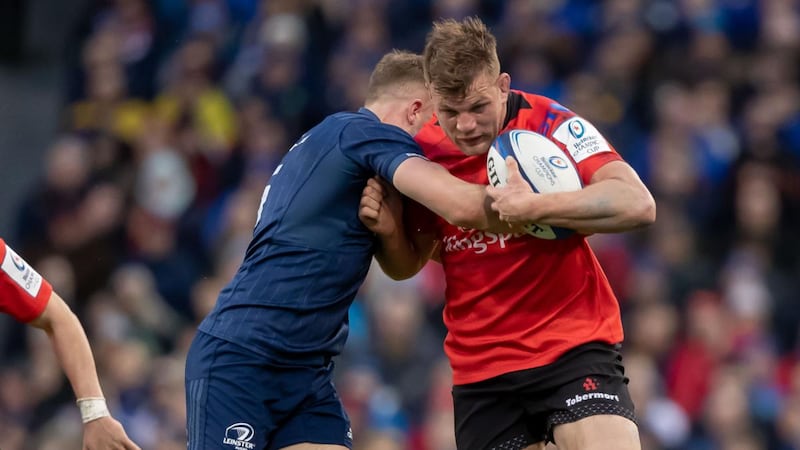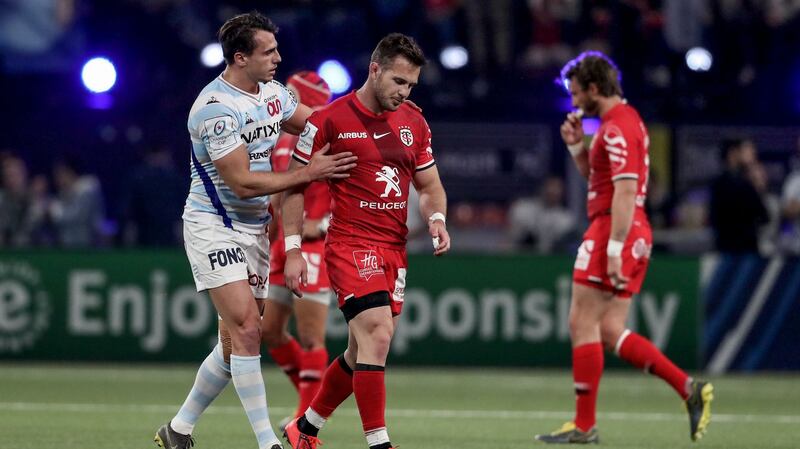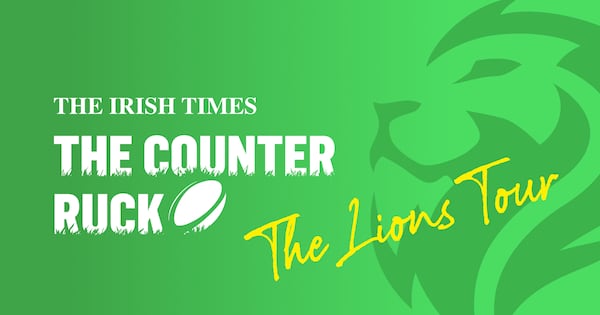Notes from a monumental European rugby weekend.
Part 1 – Ulster’s backstop.
With my Leinster cap on it's a bitter pill to swallow seeing Marty Moore, Jordi Murphy and now Jack McGrath enter their prime years in Belfast.
Leo Cullen still needs 55 players to become double champions, and probably more to repeat the achievement. No squad, we have learned, can build a depth chart three or four players deep and maintain standards, yet that’s the challenge Cullen must now face.
David Nucifora has made it very clear that the provinces are subsidiaries of the national team.
“Everyone is an employee of the IRFU,” he noted recently.
Fair enough. Something needed to change. For his own career aspirations, Jordi needed to be playing openside in a Champions Cup quarter-final. Same goes for Marty and Jack as starting props if they are to reach full potential and to ensure Ireland have alternatives should Tadhg Furlong or Cian Healy get injured or lose form.
Player movement has paved the way for Andrew Porter and most recently Scott Penny to come through at Leinster. However, there is a balance to be struck, as free movement of players could devalue the ethos of the clubs they leave or join.
Still, the logic of increased movement was apparent for all to see at the Aviva Stadium on Saturday. We saw why Kieran Treadwell, recruited from England, was sent to Belfast. We all now understand why John Cooney stopped competing with Kieran Marmion in Connacht.
My problem is bleeding Leinster to feed the other three provinces at all levels.
Sure, Ed Byrne has always shown the potential to become an international loosehead but Healy and McGrath were in the way. As we saw with Joey Carbery, someone had to move for the greater good. Jack McGrath, like Carbery, realised that to become a starting Ireland player, and earn the financial benefit that follows, he needed to get out from under Cian Healy.
Next season their rivalry, finally, becomes real.
I understand the logic, but we can't go on like this forever. Ulster, Munster and Connacht need to produce their own specialist talent. Yes, the work has belatedly begun – we see the rising Munster contingent in the Ireland 20s squad – but the heat is now on Ulster to sort out their academy and home grown recruitment systems.

It’s essential to the long term prosperity of Irish rugby. Nick Timoney and Eric O’Sullivan were not picked up by the Leinster academy. They were mapped as teenagers and featured at under-20s but there was no contract for them in Dublin. It’s a numbers game. So they went north to become professionals. After Saturday both can be written down as successful ventures.
Win, win?
Sure, but makes you wonder how far off the Ulster academy is to being comparable to Munster, never mind Leinster. They put a lot of stock in their schools system. We need to see more results.
Ulster have done unbelievably well this season. Dan McFarland could be the coach they have needed since David Humphreys headed to Gloucester six years ago. The concern is Leinster overflow remains the primary supplier in specialist positions (halfback, prop, locks etc). That must not be the only solution.
Still, it did add a new dimension to the interprovincial rivalry. We don’t need to imagine the mindset of Murphy and Moore; their performances showed what it meant for them to topple Leinster.
But the proven method of building – or rebuilding – a sustainable club is the recruitment of people who hail from the region. Manu Tuilagi re-signing for Leicester was crucial to Geordan Murphy’s project. Manu grew up there. That Toulouse, their attacking philosophy reincarnated, beat Racing 92 in Paris further supports this theory.
World class outsiders, like Jerome Kaino or Scott Fardy, are the cherry on top.
Part 2 – An unsolved Leinster/Irish problem.
Leinster, like Ireland in the Six Nations, struggled against Ulster’s rush defence. It was similar to how England and Wales went after the Irish attack.
We can start at the AJ Bell arena, where I witnessed Sale rag-dolling an understrength Connacht pack. Like Ulster at the Aviva, the Sharks had done their homework on how Irish teams want to attack out wide.
Once momentum is stalled, force the outside centre to turn inside where he can be swallowed up by covering forwards
The simple tactics: win the tackle collision, thereby killing any real momentum so the ball cannot go wide. Andy Friend adopted a prudent approach with a squad that is, clearly, not equipped to fight on two fronts by giving several forwards some valuable experience. They lie third in Conference A of the Pro 14 so their focus switches to the playoffs and qualifying for the Champions Cup.
Fair enough. But it showed a pattern in how teams are defending against Irish attacks by honing in on whoever is wearing number 13.
Once momentum is stalled, force the outside centre to turn inside where he can be swallowed up by covering forwards.
We saw this at the Aviva Stadium. Ringrose and Jordan Larmour were essentially shut down by the Ulster tight five but Darren Cave, or whoever sprinted from the line, reaped the benefits.
Leinster survived the onslaught because they played the game, retaining composure despite numerous problems, while McFarland’s team played the occasion.
This had to be Ulster's cup final and so it proved. Admirably and agonisingly, they came up short. Leinster escaped this massive upset, to my mind, due to the spectacular clear-outs of James Ryan and Fardy.
The locks wrestled back momentum at crucial junctures in the match.
Their heroics were prompted by the ball being slowed, and so the little inside pass that usually breaks open teams couldn’t come off.

Part 3 – Stockdale’s credit rating
As Jacob Stockdale becomes a master of improvisation errors are inevitable. I still think Leinster would have closed a nine-point lead in the remaining 35 minutes. Look how the game ended; Ulster to a man were out on their feet defending deep inside their 22.
I don’t think Stockdale needs to defend himself. Dave Kearney stayed in the hunt, so a fend was required and that upset his balance. Next time he will probably flop to the ground but he wasn’t carrying like a Fijian – one hand wrapped around the ball – and the player who dives can always be flipped on his back. It went badly against him but there is credit in the bank from brilliant tries against Scarlets and Racing.
He will rapidly move on and so should everyone else.
Part 4 – Rugby’s tackle conundrum
There was another flashpoint from this enthralling weekend of rugby as Toulouse's 5ft 9in outhalf Zach Holmes was red carded for a high tackle on Racing's 6ft 1in winger Juan Imhoff.
I made the exact same tackle plenty of times in my career. More often than not it was play on. At worst I conceded a penalty
The decision had me howling at my television, my instant reaction remains rooted in 2014. But it is 2019 and the game has dramatically changed. It needs to go further still to safeguard the players from each other.
The red card is harsh on Holmes but in a World Cup year it sends out an important message: tackle below the chest or suffer the consequences.
Now, Holmes might feel he has a valid case for the sanction to be reduced to a yellow card (and no suspension) as Imhoff dipped into contact but the referee, touch judges and TMO agreed in real time that contact was high so a red card must follow.

It was interesting to see the players reaction. Imhoff sought out Holmes to offer commiserations as he ran off the field.
Here is where rugby currently resides; Holmes went for a big shot, his stance and entry technique were both sound, but he missed tagging the ball in contact and his slide upwards finished with his shoulder hitting the Argentinean’s neck.
I made the exact same tackle plenty of times in my career. More often than not it was play on. At worst I conceded a penalty. The game has changed forever more.
High shots are guaranteed sin bins or sending offs if the officials cannot find mitigating circumstances.
Yes, the Holmes hit enters a grey area, because Imhoff dipped, but the referee, Luke Pearce, took his time and asked the key question of his TMO: “I need to decipher whether the Racing guy is falling to ground, which would make it NOT a red card, but if he is not dipping, from what I am seeing on the screen, it is a shoulder to the neck of the Racing player – can we have one more look just to make sure the guy is not dipping to ground?”
They looked again and while Imhoff clearly drops his body into contact, both knees are bent and they collide at almost the same height, Pearce states: “I am not seeing enough to mitigate this down to a yellow card. Is anyone else seeing anything different here?”
We do not hear what the touch judge says next but Pearce adds: “To the neck, with force, it’s a red card.”
The English man asks if the TMO has anything to add so every opportunity is offered to reduce the sanction from red to yellow.
“He dipped into him!” Toulouse captain Jerome Kaino enters the debate too late.
Players must tackle below the chest in 2019 and forever more. Yes, this means the ball carrier will be able to offload. If Holmes wants to go lower, he might have been better served by a side-on technique.
Hit the man from sternum up and there follows a real risk of sanction.
What’s more important; denying an almost certain try or keeping 15 players on the field? That is the risk reward. Turns out Toulouse survived with 14 men but coaches and players have received another message about the rules of engagement.
Now all the sport needs is consistency from officials.












